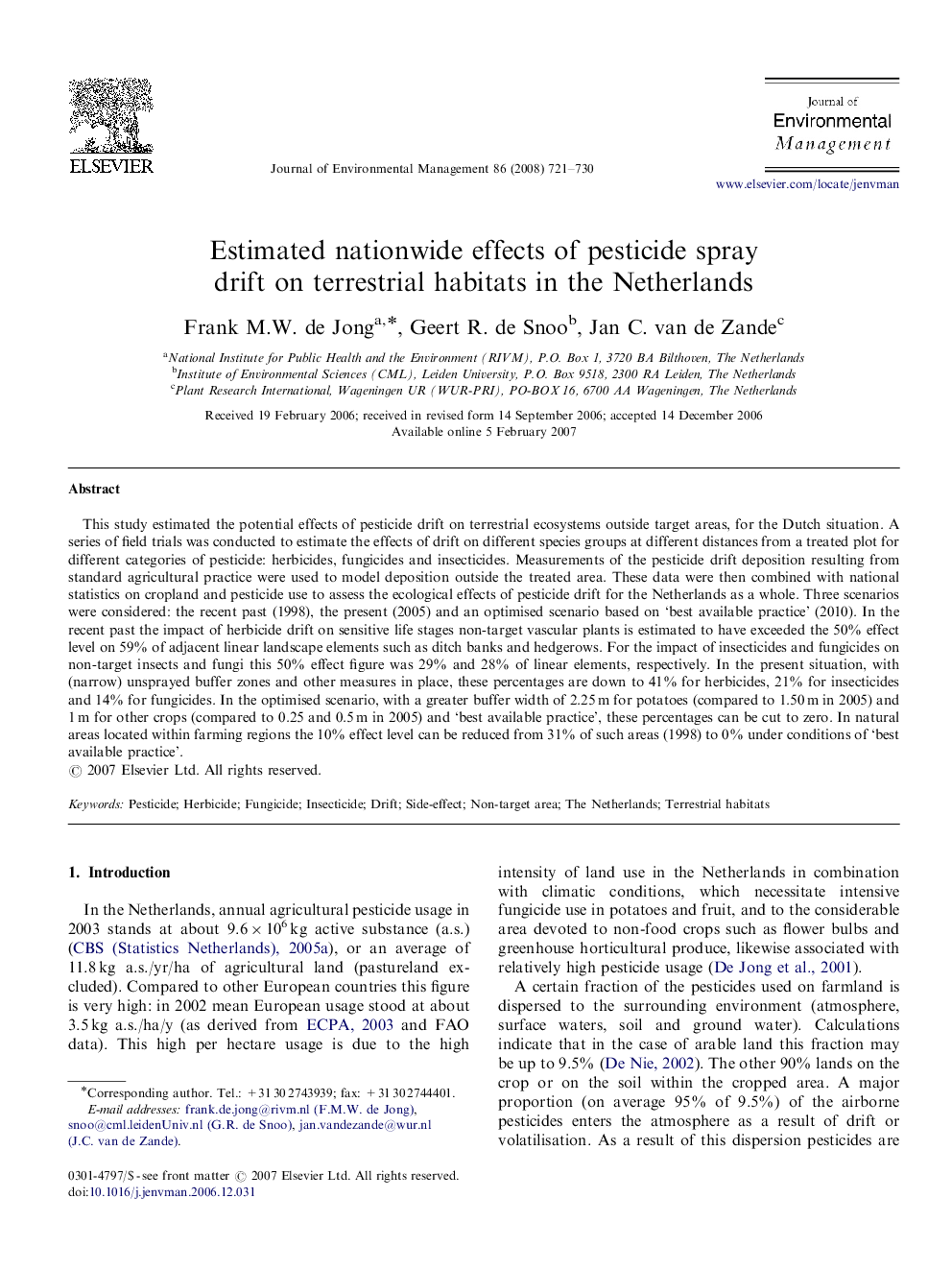| کد مقاله | کد نشریه | سال انتشار | مقاله انگلیسی | نسخه تمام متن |
|---|---|---|---|---|
| 1057863 | 947093 | 2008 | 10 صفحه PDF | دانلود رایگان |

This study estimated the potential effects of pesticide drift on terrestrial ecosystems outside target areas, for the Dutch situation. A series of field trials was conducted to estimate the effects of drift on different species groups at different distances from a treated plot for different categories of pesticide: herbicides, fungicides and insecticides. Measurements of the pesticide drift deposition resulting from standard agricultural practice were used to model deposition outside the treated area. These data were then combined with national statistics on cropland and pesticide use to assess the ecological effects of pesticide drift for the Netherlands as a whole. Three scenarios were considered: the recent past (1998), the present (2005) and an optimised scenario based on ‘best available practice’ (2010). In the recent past the impact of herbicide drift on sensitive life stages non-target vascular plants is estimated to have exceeded the 50% effect level on 59% of adjacent linear landscape elements such as ditch banks and hedgerows. For the impact of insecticides and fungicides on non-target insects and fungi this 50% effect figure was 29% and 28% of linear elements, respectively. In the present situation, with (narrow) unsprayed buffer zones and other measures in place, these percentages are down to 41% for herbicides, 21% for insecticides and 14% for fungicides. In the optimised scenario, with a greater buffer width of 2.25 m for potatoes (compared to 1.50 m in 2005) and 1 m for other crops (compared to 0.25 and 0.5 m in 2005) and ‘best available practice’, these percentages can be cut to zero. In natural areas located within farming regions the 10% effect level can be reduced from 31% of such areas (1998) to 0% under conditions of ‘best available practice’.
Journal: Journal of Environmental Management - Volume 86, Issue 4, March 2008, Pages 721–730